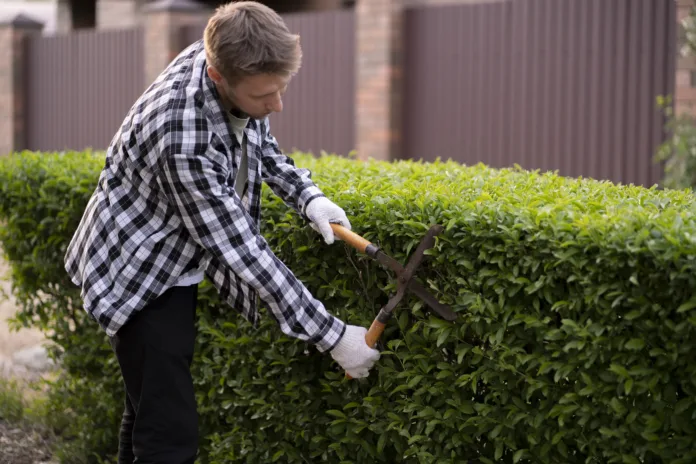Hedges play a vital role in landscaping, serving as natural fences, privacy screens, and decorative elements that enhance curb appeal. Proper hedge maintenance ensures healthy growth, optimal shape, and longevity. One of the most critical aspects of hedge maintenance is trimming. However, knowing when and how often to trim your hedges depends on factors such as the plant species, growth rate, climate, and intended shape. This comprehensive guide will help you determine the best trimming schedule to keep your hedges healthy and beautiful year-round.
Understanding Hedge Growth Cycles
Before discussing trimming frequency, it is essential to understand hedge growth patterns. Different hedge species have varying growth habits:
- Deciduous Hedges (e.g., beech, hornbeam, privet) shed their leaves annually and typically require pruning during dormancy.
- Evergreen Hedges (e.g., boxwood, yew, holly) retain their foliage year-round and need regular trimming for maintenance.
- Flowering Hedges (e.g., lilac, forsythia, hydrangea) require specialized pruning to preserve blooms while maintaining shape.
- Fast-Growing Hedges (e.g., leylandii, privet, laurel) need more frequent trimming to control height and spread.
Understanding these growth cycles helps determine the best trimming schedule and methods for maintaining a healthy hedge.
When Should You Trim Your Hedges?
The ideal time to trim hedges depends on their species, climate, and growth cycle. Below are general guidelines for different types of hedges:
1. Deciduous Hedges
- Best Time to Trim: Late winter or early spring before new growth emerges.
- Reason: Pruning during dormancy minimizes stress and encourages vigorous spring growth.
- Additional Maintenance: Light trimming during summer can help maintain shape without excessive stress.
2. Evergreen Hedges
- Best Time to Trim: Late spring or early summer, after new growth has emerged.
- Reason: Trimming in early summer prevents frost damage and ensures dense, healthy foliage.
- Additional Maintenance: A second light trim in late summer or early autumn helps maintain shape.
3. Flowering Hedges
- Spring-Blooming Hedges (e.g., lilac, forsythia): Trim immediately after flowering to avoid removing next year’s buds.
- Summer-Blooming Hedges (e.g., butterfly bush, rose of Sharon): Prune in late winter or early spring before new growth appears.
- Reason: Timing the pruning correctly ensures a vibrant display of flowers without reducing bloom potential.
4. Fast-Growing Hedges
- Best Time to Trim: Early spring and repeated throughout the growing season (every 6–8 weeks).
- Reason: Regular trimming keeps rapid growth in check and prevents hedges from becoming unruly.
5. Newly Planted Hedges
- Best Time to Trim: The first trim should be after planting to encourage branching.
- Reason: Regular shaping from an early stage ensures a dense, compact hedge structure.
How Often Should You Trim Your Hedges?
Trimming frequency depends on the growth rate of your hedge species. Below is a general guide:
| Hedge Type | Growth Rate | Recommended Trimming Frequency |
|---|---|---|
| Slow-Growing Hedges (e.g., boxwood, holly) | 6–12 inches per year | 1–2 times per year |
| Medium-Growing Hedges (e.g., beech, yew) | 1–2 feet per year | 2–3 times per year |
| Fast-Growing Hedges (e.g., privet, leylandii) | 3–5 feet per year | Every 6–8 weeks during the growing season |
Consistently trimming at the right frequency maintains an attractive shape and prevents hedges from becoming overgrown and difficult to manage.
Best Practices for Trimming Hedges
1. Use the Right Tools
Having the proper tools ensures a clean and healthy trim:
- Hand Pruners: Best for small hedges and delicate shaping.
- Hedge Shears: Ideal for medium-sized hedges requiring light trimming.
- Electric or Gas Hedge Trimmers: Suitable for large hedges or extensive pruning tasks.
- Loppers and Saws: Needed for cutting thick branches in mature hedges.
2. Follow Proper Trimming Techniques
To achieve well-maintained hedges:
- Start at the Bottom: Trim from the bottom up to ensure an even, tapered shape.
- Maintain a Slight Taper: Keep hedges slightly wider at the base than at the top to allow sunlight to reach lower branches.
- Avoid Overcutting: Remove no more than one-third of the hedge’s height or width at a time to prevent stress.
- Cut at an Angle: Angled cuts prevent water buildup and reduce disease risk.
3. Keep Hedges Healthy
- Watering: Hydrate hedges during dry periods to prevent stress.
- Fertilization: Apply a balanced fertilizer in early spring to encourage strong growth.
- Mulching: Add a layer of mulch around the base to retain moisture and suppress weeds.
- Pest Control: Watch for common pests like aphids, spider mites, and scale insects, and take appropriate action if infestations occur.
Common Hedge Trimming Mistakes to Avoid
1. Trimming at the Wrong Time
- Cutting spring-flowering hedges too early removes flower buds and reduces blooms.
- Trimming late in the season may expose hedges to winter damage.
2. Over-Pruning
- Excessive trimming weakens hedges and slows regrowth.
- Cutting too deep into old wood may prevent regrowth in some species (e.g., conifers like juniper and arborvitae).
3. Ignoring Hedge Shape
- A top-heavy hedge blocks sunlight from reaching lower branches, leading to sparse growth.
- Uneven cuts result in an unattractive appearance and poor regrowth.
4. Using Dull or Dirty Tools
- Dull blades create ragged cuts that increase susceptibility to disease.
- Dirty tools spread fungal infections and pests between plants.
Conclusion
Regular hedge trimming is essential for maintaining a neat, healthy, and visually appealing landscape. The best trimming schedule depends on the hedge species, growth rate, and seasonal factors. By following the correct trimming techniques and best practices, you can ensure that your hedges remain lush, vibrant, and well-maintained throughout the year. Whether you’re managing a formal hedge, a fast-growing privacy screen, or a flowering shrub, a well-planned trimming routine will keep your greenery in top shape for years to come.
